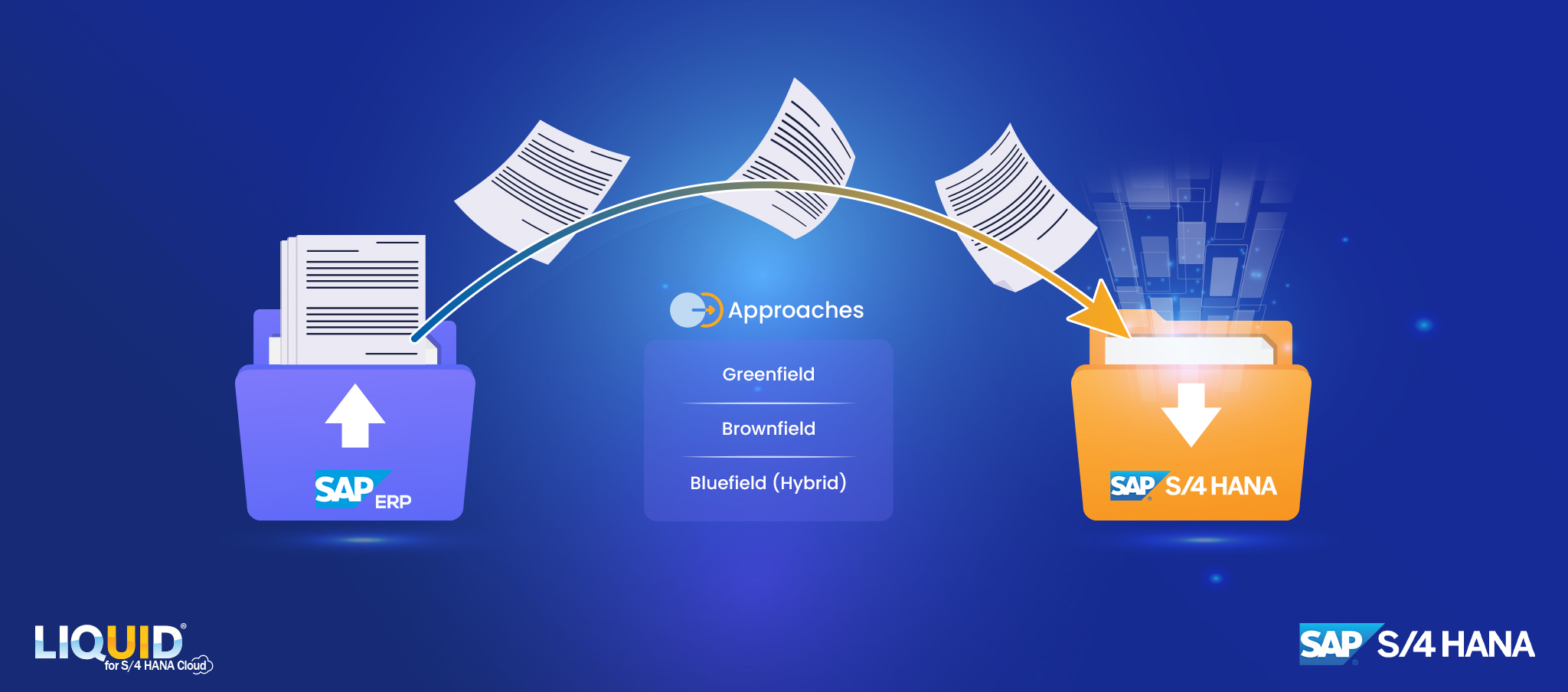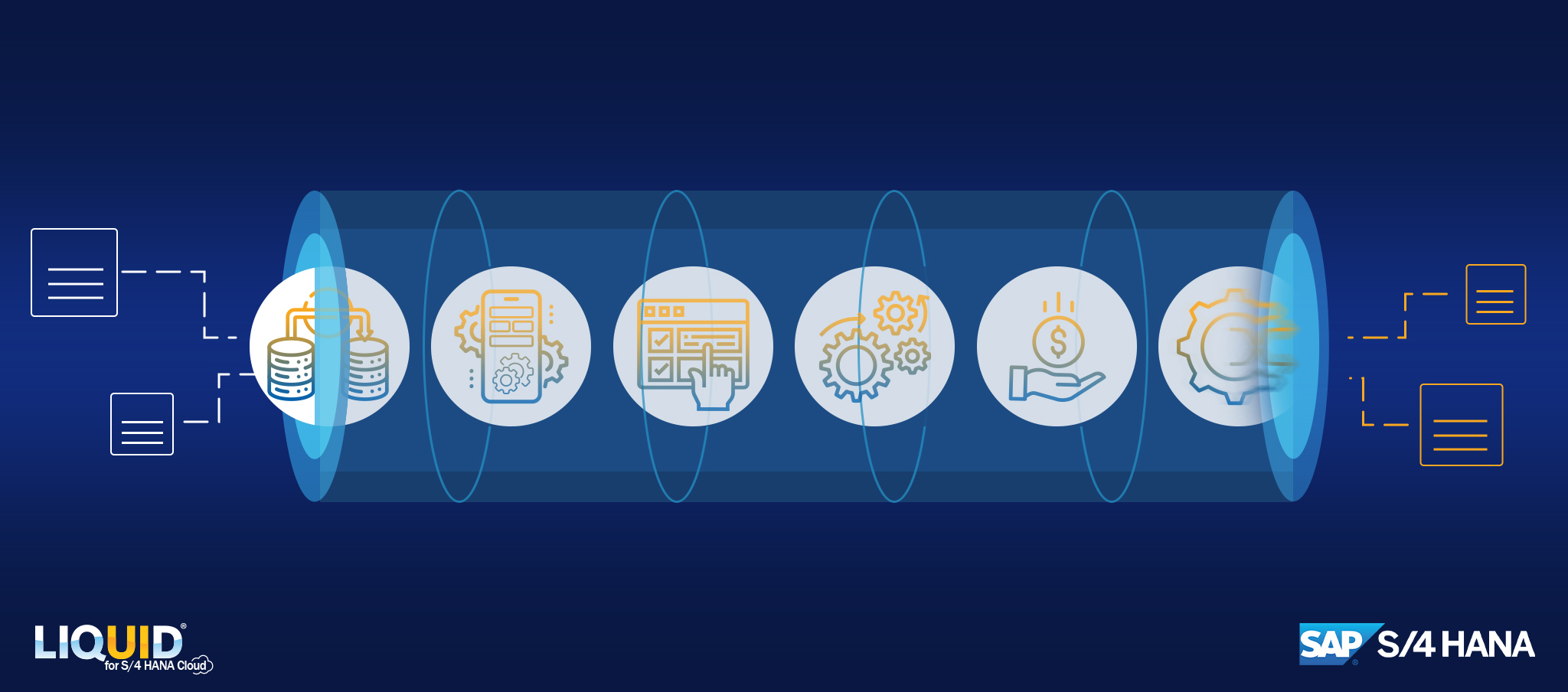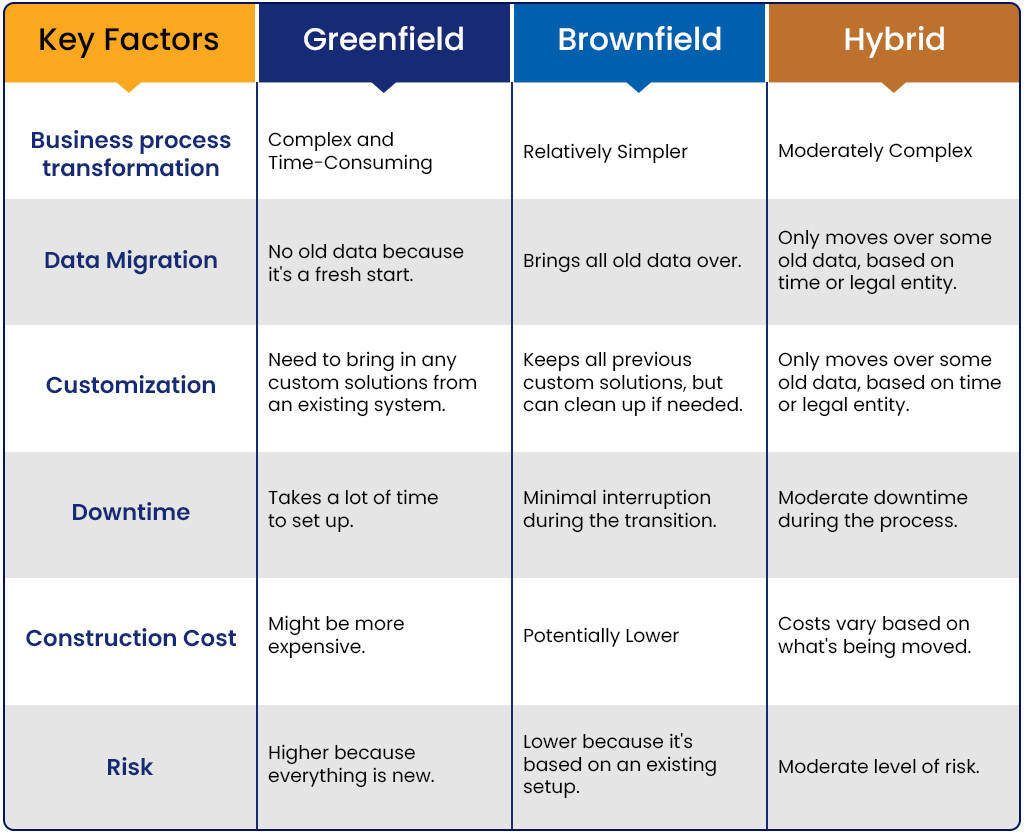
Migrate to SAP S/4HANA?
SAP S/4HANA is the next-generation ERP system from SAP, built on the powerful SAP HANA in-memory database. It serves as a central digital core, enhancing business operations and integrating advanced functionalities, catering to the needs of modern enterprises.
Migrating to S/4HANA empowers businesses to drive innovation, accelerate growth, and embark on digital transformation journeys. With its modern architecture, S/4HANA facilitates the optimization of operations, enhancement of customer experiences, and exploration of new revenue streams.
Transitioning to S/4HANA isn't direct and requires thorough planning and consideration before diving in. Organizations must evaluate their current operating model and assess their readiness for the migration before proceeding.
How to Migrate to S/4HANA
Migrating to SAP S/4HANA is a complex process that requires careful planning, execution, and coordination across multiple teams and stakeholders. Here are the key steps involved in migration:
- Assess your existing SAP system, define business objectives, and determine the expected outcomes of the migrations.
- Develop a detailed target architecture, choose a deployment option (on-premise, cloud, or hybrid), and design the data migration strategy.
- Customize S/4HANA to fit your needs and set up new processes.
- Create a comprehensive testing plan and execute it in a dedicated test environment.
- Schedule the cutover window, perform technical cutover activities, and monitor the system closely post-migration.
Key Challenges in S/4HANA Migration

Migrating to SAP S/4HANA comes with its fair share of challenges that organizations need to navigate carefully. Here are some common challenges encountered during the migration process:
- Data Migration: Moving data from legacy systems to SAP S/4HANA can be complex and time-consuming. Ensuring data accuracy, completeness, and integrity while migrating large volumes of data poses significant challenges.
- Challenges with Customized Fields: Organizations often have customized fields and configurations in their existing systems. Mapping and migrating these customizations to S/4HANA can be challenging, requiring careful analysis and adaptation to fit the new system's structure.
- User Interface Adoption: SAP S/4HANA comes with a modern user interface and user experience, which may require users to adapt to new navigation and functionality. Comprehensive training and support are needed for smooth user adoption of the new interface.
- Business Process Re-engineering and Changes in SAP Roles: Transitioning to SAP S/4HANA may involve re-engineering existing business processes to align with best practices and standard functionalities. This may require changes in SAP roles and responsibilities, which can impact organizational structure and workflows.
- Costs Associated with Migration: Migrating to SAP S/4HANA can be a costly undertaking. The costs associated with the migration include software licenses, implementation services, training, and hardware upgrades. Organizations need to carefully assess the costs and benefits of the migration before making a decision.
- Challenges in Transitioning to Production with S/4HANA: Moving from a testing or development environment to a production environment with SAP S/4HANA requires careful planning and coordination. Ensuring a smooth transition without disrupting business operations can be challenging, requiring thorough testing and validation.
Proactively addressing these challenges, implementing effective mitigation strategies, and ensuring a successful migration to S/4HANA, organizations can unlock the full potential of their SAP platform while safeguarding against unforeseen setbacks.
SAP S/4HANA Migration Approaches
Migrating to SAP S/4HANA can be a complex endeavor that requires a well-thought-out strategy. SAP has developed three key migration approaches to assist organizations in managing this transition effectively, addressing any potential challenges, and aligning with their business needs. Three main migration approaches are as follows:
- The Greenfield Approach – New Implementation:
The Greenfield approach involves starting fresh with a new implementation of S/4HANA. This approach is best suited for organizations seeking a clean break from their existing ERP system or no existing SAP system.
Considerations before choosing the Greenfield approach:
- Define new business processes aligned with strategic goals.
- Migrate only relevant data to the new system.
- Ensure proper system installation.
- Provide necessary training to business users regarding the new system.
- The Brownfield Approach – System Conversion:
The Brownfield approach involves converting an existing SAP system to S/4HANA. Organizations that already use an SAP system and are looking to upgrade to S/4HANA are best suited for this approach.
Considerations before choosing the Brownfield approach:
- Upgrade existing systems to the new SAP S/4HANA.
- Modify any custom code to ensure compatibility with S/4HANA.
- Ensure data consistency before, during, and after the implementation.
- The Hybrid Approach - Selective Data Transition:
The Hybrid approach combines elements of both the Greenfield and Brownfield approaches. With this approach, organizations can convert some of their data and processes to S/4HANA, while leaving others on their existing ERP system. This strategy is ideal for organizations seeking a gradual migration strategy or with processes not ready for S/4HANA.
Considerations before choosing the Hybrid approach:
- Select data for migration based on relevance and business value.
- Redesign selected business processes while retaining others.
- Consolidate multiple systems into one.
Let’s look into a differences chart of these three approaches:

SAP businesses have the flexibility to select an approach that aligns with their specific requirements, available resources, and readiness for change. Choosing the most suitable path hinges on a thorough understanding of these factors. Embracing S/4HANA's innovative capabilities enables organizations to drive operational excellence and enrich customer experiences. Collaborating with the right SAP consultants such as Liquid UI can greatly enhance the chances of a successful implementation.




